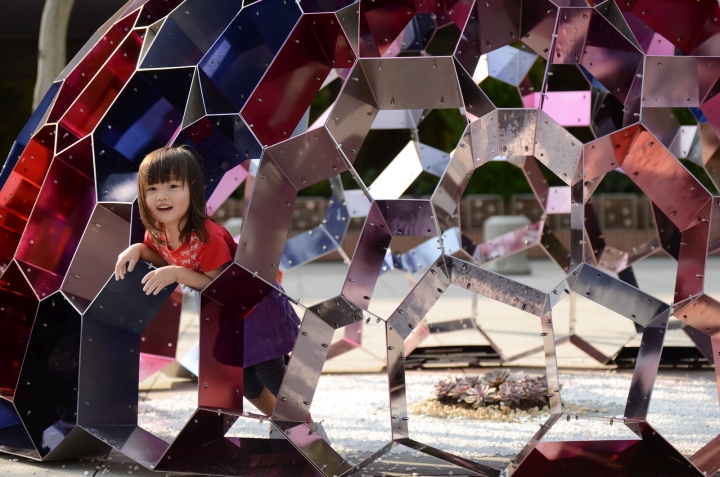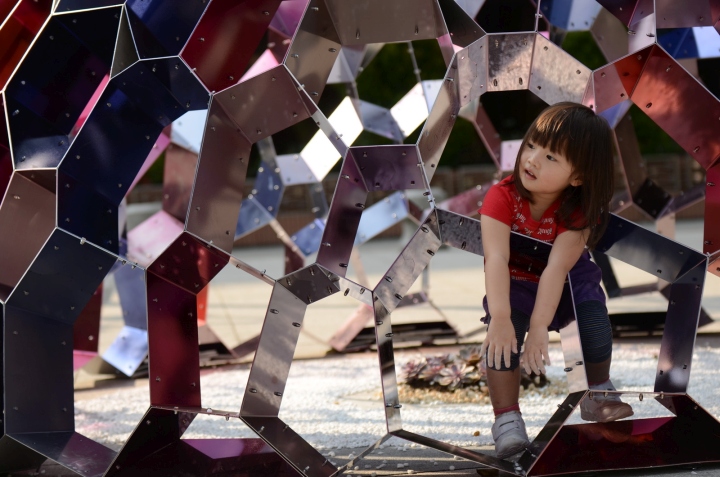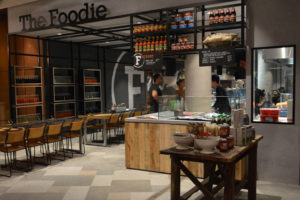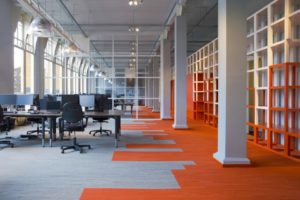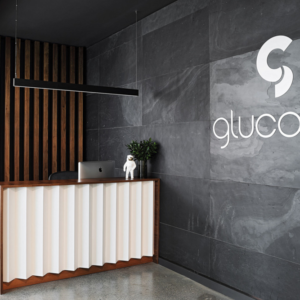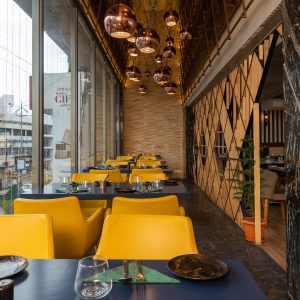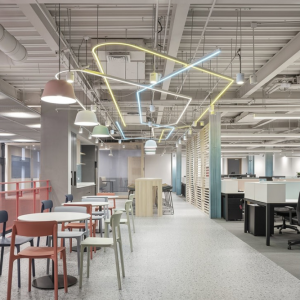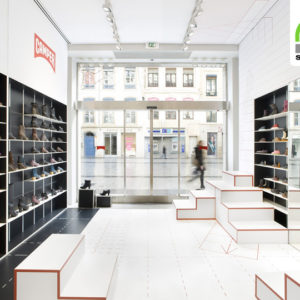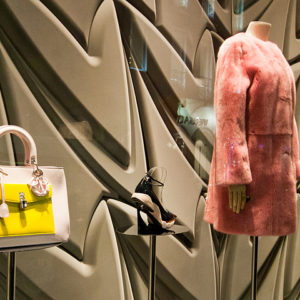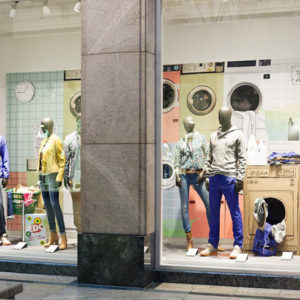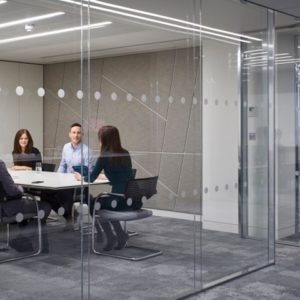


Kaleidome is a public art installation by LAAB at a local town park in Hong Kong, organized by Hong Kong Youth Arts Foundation for “Jockey Club Community Arts Biennale 2015″. Kaleidome reflects a blossom of light-and-shadow interplay, offering constantly changing moments that captivate the souls of urban strollers. In this public artwork, viewers are also creators. Together, they make various compositions of color-tinted reflections that transform the empty plaza into a flourished garden.

Kaleidome is composed of 262 polyhedral cells of polished-stainless-steel mirror. Each reflective cell is a small window that frames the environment and multiples the vista. Like a kaleidoscope, it shuffles the images of river, trees, buildings, passers-by and flowers in the air, and tints the concrete plaza into a flourished place. Looking at the oculus, you will discover a network of veins composed of ultra-thin, almost invisible polygon profiles, visually juxtaposing the tree branches in the sky. The cells packed in a curvilinear form also produce a dynamic visual effect, as they oscillate between opaque and transparent in viewers’ eyes. The project crosses the boundary between art and architecture. Pushing against the limit of height, area and budget, our team maximized the volume in a dome structure with minimum material consumption. Every edge or corner was carefully polished to ensure that it is kid-friendly.
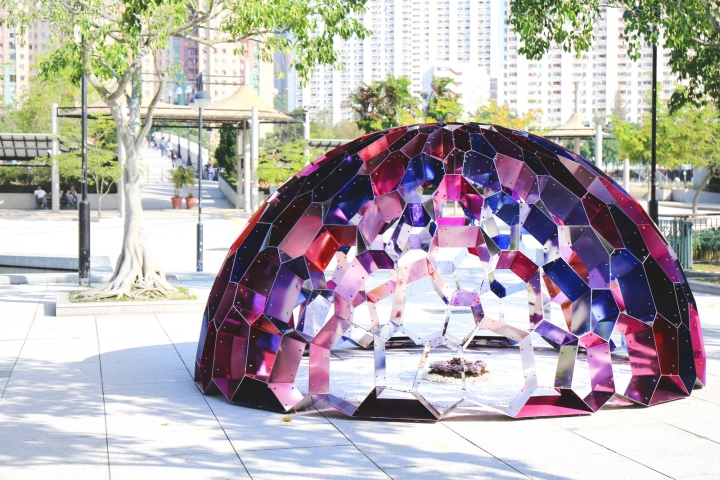
Technique
With advanced programming and precise digital fabrication technique, our team designed and manually constructed the Kaleidome with our own hands. The 262 polyhedral cells are made of polished-stainless-steel mirror in 22 shapes. Each mirror was laser-cut and folded according to our parametric computer model. The cell is tinted in various shades of red and blue with a very thin layer of paint that preserves the reflectiveness of the original mirror finish. Not only did the parametric model streamline the design and fabrication process, but it also minimized the amount of materials on dome construction.

Mathematically speaking, Kaleidome is ‘Voronoi tessellation’ – a partitioning of the semi-spherical surface – into regions based on distance to points in a specific subset of the plane. In other words, it is a geometric diagram computed by taking pairs of ‘center points’ that are close together and drawing a line that is equidistant between them and perpendicular to the line connecting them. All points on the lines are equidistant to the nearest two or more source points.
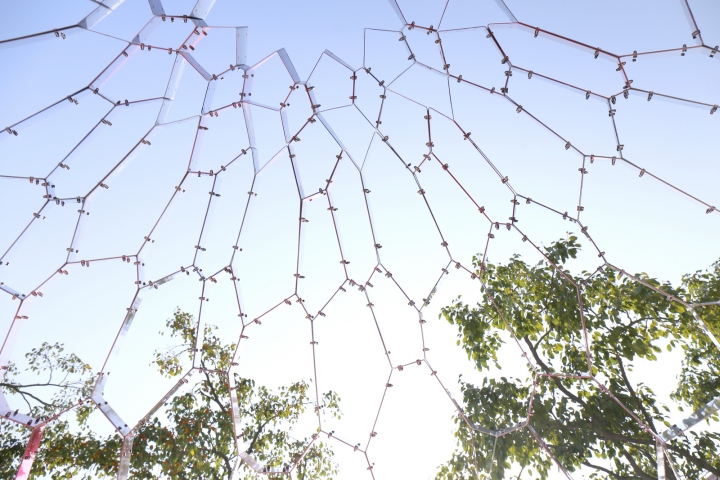
Reception
This project has taken a fresh approach on public art project in Hong Kong. Unlike most public sculptures in Hong Kong, the visitors are encouraged to touch Kaleidome, or enter its space even, rather than just observing it from a distance. Between art and architecture, Kaleidome is a spatial intervention that invites interaction from its visitors. In Asia, Kaleidome can be seen as a pilot project of emerging digital fabrication technique and the Makers’ Movement. While production for most design is usually outsourced to a contractor, in this project, the designers are also the builders. The culture of designer-builder is increasingly popular as part of the Makers’ Movement and Digital Revolution.

The project has brought excitement to the Shatin town community and attracted visitors to the park. At the opening, we were happy to see smiles and excitement on the face of local community workers, students, teachers, kids, grannies, and families. Because of the techniques used, an expat investment banker with mathematics background invited us for an hour discussion on Voronoi geometry and systemic repetition. While looking at the artwork, grey-hair couples also expressed their gratitude and hopes for a more colorful park in their neighborhood.
Design: LAAB // Design Lead: Ricci Wong / Otto Ng / Yip Chun Hang / Hugo Ma // Team: CK Wong / Gary Chan / Hang Yip / Ricci Wong / Otto Ng / Kenneth Cheung / Carolyn Tam / Honley Cheuk / Happy Yam, Zion Chan / Catherine Cheng / Li Yuen Lung
Photography: Otto Ng / Ricci Wong / Carolyn Tam
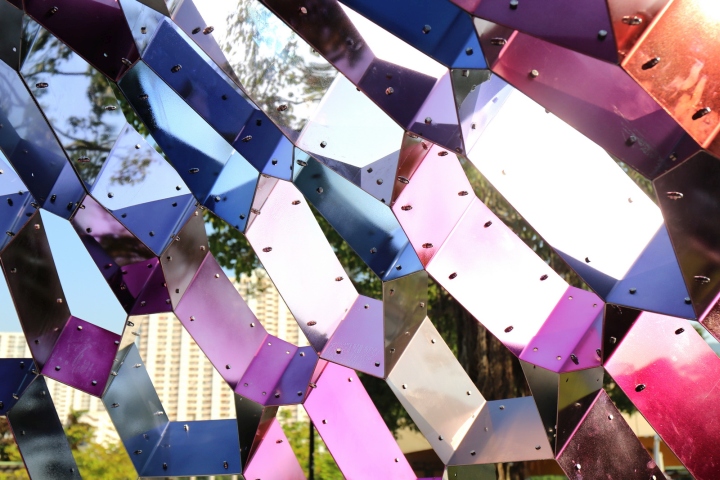
About LAAB
LAAB is a laboratory for Art and Architecture – a unique blend of artists, architects, engineers, craftsmen and state-of-the-art fabrication machines – having a strong desire to approach each project with a fresh perspective. Working on a multitude of creative projects – ranging from architecture and interior, to artwork and event experience – LAAB see social interaction and ecological responsibility as important as innovation and craftsmanship.

The team is directed by Ricci Wong, Otto Ng, and Yip Chun Hang who were the recipients of the Young Architect of 2014 Award by Hong Kong Institute of Architects, 40 under 40 Design Talents by Perspective Magazine, Schnitizer Artist Silver Prize by MIT, and Alumni Prize Medal by HKU. They were also invited as guest speaker at TEDx Kowloon, TED@Seoul, Good Design Talk, as well as lectures at local and overseas universities, and also represented Hong Kong at the Venice Biennale of Architecture.
